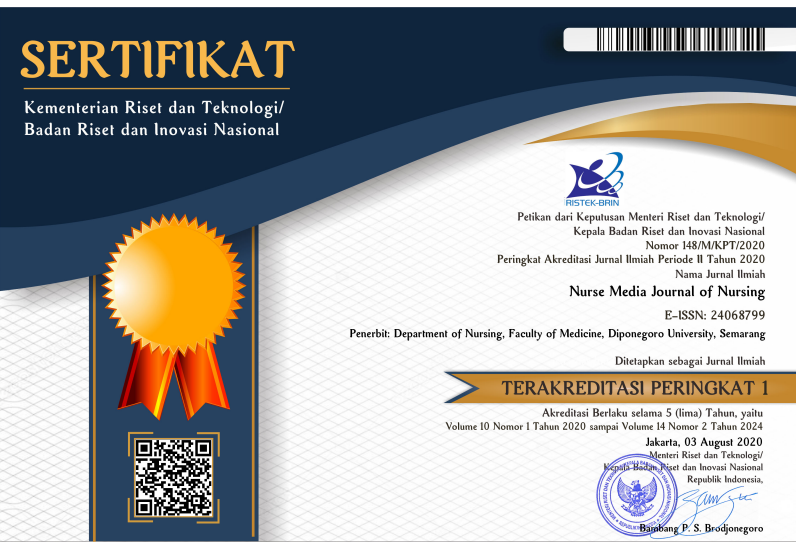Tahajjud Prayer and Its Association with Anthropometric and Blood Pressure Parameters in Young Adults: A Cross-Sectional Study
Keywords:
Blood pressure, BMI, cross-sectional study, Tahajud prayer, weightAbstract
Background: The spiritual significance of Tahajjud prayer is well established; however, its association with physiological markers such as body weight (BW), body mass index (BMI), and blood pressure (BP), particularly in relation to gender, remains underexplored.
Purpose: This study aimed to assess the association between Tahajjud prayer and anthropometric and BP parameters in young adults by comparing Tahajjud and non-Tahajud groups, as well as regular and irregular Tahajjud practice, with attention to gender differences.
Methods: A cross-sectional study was conducted among 462 Muslim participants (206 men, 256 women) aged 18–22 years. Data on demographics, religious practices, and Tahajjud frequency were collected through questionnaires. Participants were categorized into Tahajjud and non-Tahajjud groups; those who performed Tahajjud were further classified as regular (≥3 times/week) or irregular (<3 times/week). BP was measured using a digital sphygmomanometer, BW with a digital scale, and height with a digital stadiometer. Comparisons of BW, BMI, and BP were made across Tahajjud and non-Tahajjud groups, regular and irregular Tahajud practitioners, and by gender. Data were analyzed using Chi-square and t-tests at a 95% confidence level (p<0.05).
Results: The prevalence of Tahajjud practice was higher among women than men, both overall (70.71% vs. 66.51%) and for regular practice (32.04% vs. 13.86%), with a significant gender difference in regular Tahajjud (p=0.001). No significant gender-specific differences in BW or BMI were observed between Tahajjud and non-Tahajjud groups. Among women, systolic BP was significantly lower in the Tahajjud group (p=0.001). Regular Tahajjud practice was associated with lower BW and BMI in both women (p<0.005) and men (p<0.05). Although systolic and diastolic BP were lower among regular Tahajjud practitioners, differences were not statistically significant. Irregular Tahajjud was associated with a higher prevalence of overweight and obesity (p=0.016).
Conclusions: Regular Tahajjud practice was associated with lower BW, BMI, and modest reductions in BP, suggesting a potential role in obesity prevention and cardiovascular health. Nurses can incorporate culturally relevant practices like Tahajjud into health education and lifestyle counseling programs.
Downloads
References
1. Alam, I., Ullah, R., Jan, A., Sehar, B., Khalil, A. A. K., Naqeeb, H., Ali, E. A., Wahab, Q. M. F., Safdar, M., Ali, A., Zaman, M. H., & Zeb, F. (2022). Improvement in cardio-metabolic health and immune signatures in old individuals using daily chores (Salat) as an intervention: A randomized crossover study in a little-studied population. Frontiers in Public Health, 10(October), 1–11. https://doi.org/10.3389/fpubh.2022.1009055
2. Aronow, W. S. (2017). Association of obesity with hypertension. Annals of Translational Medicine, 5(17), 11–13. https://doi.org/10.21037/atm.2017.06.69
3. Bharmala, N. H., McCarthyb, W. J., Gadgilc, M. D., Kandulad, N. R., & Kanaya, A. M. (2018). The Association of Religious Affiliation with Overweight/Obesity among South Asians: The Mediators of Atherosclerosis in South Asians Living in America (MASALA) Study. J Relig Health, 57(1), 33–46. https://doi.org/10.1007/s10943-016-0290-z
4. Boulé, N. G., & Prud’homme, D. (2020). Physical Activity in Obesity Management. In Nutritional and Physical Education (pp. 1–23). https://obesitycanada.ca/guidelines/physicalactivity
5. Boy, E., Harahap, M., Jolanda, Y., Siregar, N., Maulida, R., Sihotang, S., Hardita, A., Nasution, K., Aqmalia, Y., Ritonga, P., Anggraini, A., & Rasyid, A. M. (2020). The Relationship between Tahajjud Prayer and the Prevalence of Hypertension in the Elderly in the Work Area of Puskesmas Kedai Durian. Proceeding International Conference on Culture, Language and Literature IC2LC, 3(53), 385–390. https://proceeding.umsu.ac.id/index.php/ic2lc
6. Castro, E. A., Carraça, E. V., Cupeiro, R., López-Plaza, B., Teixeira, P. J., González-Lamuño, D., & Peinado, A. B. (2020). The effects of the type of exercise and physical activity on eating behavior and body composition in overweight and obese subjects. Nutrients, 12(2). https://doi.org/10.3390/nu12020557
7. Chamsi-pasha, M., & Chamsi-pasha, H. (2021). A review of the literature on the health benefits of Salat (Islamic prayer). Med J Malaysia, 76(1), 93–97. https://doi.org/https://www.researchgate.net/publication/348907933
8. Chin, S. H., Kahathuduwa, C. N., & Binks, M. (2016). Physical activity and obesity: what we know and what we need to know*. Obesity Reviews, 17(12), 1226–1244. https://doi.org/10.1111/obr.12460
9. Chodijah, S. (2017). The Concept of Tahajud Prayer Through Psychotherapy Approach in Relationship With Psychological Health. Proceedings of the 1st International Conference on Innovative Pedagogy (ICIP 2017) STKIP Bina Bangsa Getsempena May 18-19, 2017 Banda Aceh, Indonesia, Icip, 324–330
10. Dewi, N. U., Tanziha, I., Solechah, S. A., & Bohari. (2020). Obesity determinants and the policy implications for the prevention and management of obesity in Indonesia. Current Research in Nutrition and Food Science, 8(3), 942–955. https://doi.org/10.12944/CRNFSJ.8.3.22
11. Doufesh, H., Ibrahim, F., Ismail, N. A., & Ahmad, W. A. W. (2014). Effect of Muslim Prayer (Salat) on a Electroencephalography and Its Relationship with Autonomic Nervous System Activity. The Journal of Alternative and Complementary Medicine, 20(7), 558–562. https://doi.org/10.1089/acm.2013.0426
12. Doufesh, H., Ibrahim, F., Ismail, N. A., & Wan Ahmad, W. A. (2013). Assessment of heart rates and blood pressure in different Salat positions. Journal of Physical Therapy Science, 25(2), 211–214. https://doi.org/10.1589/jpts.25.211
13. Ersoy, C., & Ersoy, A. (2019). Obesity and Hypertension. Turk J Int Med, 1(1), 6–14. http://www.tjim.org
14. Fatima, S. L., Amjad, F., & Hashim, A. (2022). Association of Muslim prayers and physical fitness among general population-A systematic Review. Rawal Medical Journal, 47(2), 501–505. https://www.researchgate.net/publication/362708264
15. Hamasaki, H. (2017). Physical Activity and Obesity in Adults. In Adiposity - Epidemiology and Treatment Modalities (Issue March, pp. 1–22). https://doi.org/10.5772/64672
16. Harbuwono, D. S., Pramono, L. A., Yunir, E., & Subekti, I. (2018). Obesity and central obesity in indonesia: Evidence from a national health survey. Medical Journal of Indonesia, 27(2), 53–59. https://doi.org/10.13181/mji.v27i2.1512
17. Head, G. A., & Lukoshkova, E. V. (2008). Understanding the morning rise in blood pressure. Clinical and Experimental Pharmacology and Physiology, 35(4), 516–521. https://doi.org/10.1111/j.1440-1681.2008.04908.x
18. Hussain, M. A., Mamun, A. Al, Reid, C., & Huxley, R. R. (2016). Prevalence, Awareness, Treatment and Control of Hypertension in Indonesian Adults Aged >40 Years: Findings from the Indonesia Family Life Survey (IFLS). PLOS ONE, 11(8), 1–16. https://doi.org/10.1371/journal.pone.0160922
19. Iftikhar, R., Albar, M., & Qadi, M. (2016). Obesity and Lifestyle Recommendations in the Light of Islam. Journal of Family Medicine and Disease Prevention, 2(2), 1–6. https://doi.org/10.23937/2469-5793/1510034
20. Jakicic, J. M., Rogers, R. J., Davis, K. K., & Collins, K. A. (2018). Role of physical activity and exercise in treating patients with overweight and obesity. Clinical Chemistry, 64(1), 99–107. https://doi.org/10.1373/clinchem.2017.272443
21. Jasemi, M., Valizadeh, L., Zamanzadeh, V., & Keogh, B. (2017). A concept analysis of holistic care by hybrid model. Indian Journal of Palliative Care, 23(1), 71–80. https://doi.org/10.4103/0973-1075.197960
22. Jiang, S. Z., Lu, W., Zong, X. F., Ruan, H. Y., & Liu, Y. (2016). Obesity and hypertension. Experimental and Therapeutic Medicine, 12(4), 2395–2399. https://doi.org/10.3892/etm.2016.3667
23. Kantanista, A., & Osiński, W. (2014). Underweight in 14 to 16 year-old girls and boys: prevalence and associations with physical activity and sedentary activities. Annals of Agricultural and Environmental Medicine, 21(1), 114–119
24. Kario, K. (2005). Morning surge and variability in blood pressure: A new therapeutic target? Hypertension, 45(4), 485–486. https://doi.org/10.1161/01.HYP.0000158313.57142.3f
25. Kaul, K. K. (2018). Yoga therapy of obesity and diabetes. IOSR Journal of Nursing and Health Science, 7(6), 23–33. https://doi.org/10.9790/1959-0706112333
26. Khasanah, D. N. (2022). the Risk Factors of Hypertension in Indonesia (Data Study of Indonesian Family Life Survey 5). Journal of Public Health Research and Community Health Development, 5(2), 80–89. https://doi.org/10.20473/jphrecode.v5i2.27923
27. Kotchen, T. A. (2010). Obesity-related hypertension: Epidemiology, pathophysiology, and clinical management. American Journal of Hypertension, 23(11), 1170–1178. https://doi.org/10.1038/ajh.2010.172
28. Kumar, B., Chawla, O., Bhattacharjee, M., & Singh, A. (2021). Circadian Rhythm of Blood Pressure. Indian Journal of Medical Specialities, 12(2), 53–58. https://doi.org/10.4103/injms.injms_4_21
29. Kwak, S. G., & Kim, J. H. (2017). Central limit theorem: The cornerstone of modern statistics. Korean Journal of Anesthesiology, 70(2), 144–156. https://doi.org/10.4097/kjae.2017.70.2.144
30. Legiran, L., Febriani, R., Mubarak, M. R., & Pakpahan, S. (2022). Effect of salat on blood pressure and pulse rate in stage one primary hypertension patients. Jurnal Kedokteran Dan Kesehatan Indonesia, 13(2), 178–185. https://doi.org/10.20885/jkki.vol13.iss2art10
31. Lopez-Jimenez, F., Almahmeed, W., Bays, H., Cuevas, A., Di Angelantonio, E., le Roux, C. W., Sattar, N., Sun, M. C., Wittert, G., Pinto, F. J., & Wilding, J. P. H. (2022). Obesity and cardiovascular disease: mechanistic insights and management strategies. A joint position paper by the World Heart Federation and World Obesity Federation. European Journal of Preventive Cardiology, 29(17), 2218–2237. https://doi.org/10.1093/eurjpc/zwac187
32. Mahiroh, H., Astutik, E., & Pratama, R. A. (2019). The Association of Body Mass Index, Physical Activity and Hypertension in Indonesia. Jurnal Ners, 14(1), 16–22. https://doi.org/10.20473/jn.v14i1.12811
33. Mahwati, Y. (2019). Effect of Body Weight Changes on Hypertension in Indonesian Adults (A 14-Year Follow Up). Makara Journal of Health Research, 23(1), 32–39. https://doi.org/10.7454/msk.v23i1.10467
34. Mendes, E., Farinatti, P., Andaki, A., Santos, A. P. dos, Cordeiro, J., Vale, S., Pizarro, A., Santos, M. P., & Mota, J. (2025). Relationship Among Body Mass Index, Physical Activity, Sedentary Behavior, and Blood Pressure in Portuguese Children and Adolescents: A Cross-Sectional Study. International Journal of Environmental Research and Public Health, 22(1), 1–9. https://doi.org/10.3390/ijerph22010020
35. Meouchy, P. El, Wahoud, M., Allam, S., Chedid, R., Karam, W., & Karam, S. (2022). Hypertension Related to Obesity: Pathogenesis, Characteristics and Factors for Control. International Journal of Molecular Sciences, 23(20), 1–26. https://doi.org/10.3390/ijms232012305
36. Muntner, P., Shimbo, D., Carey, R. M., Charleston, J. B., Gaillard, T., Misra, S., Myers, M. G., Ogedegbe, G., Schwartz, J. E., Townsend, R. R., Urbina, E. M., Viera, A. J., White, W. B., & Jr, J. T. W. (2019). Measurement of Blood Pressure in Humans. Hypertension, 73, e35–e66. https://doi.org/10.1161/HYP.0000000000000087
37. Naureen, I., Saleem, A., Naeem, M., Bilal, N.-M., Hassan, G. M., Shafiq, M., Hussain, M., & Roohullah, S. (2022). Effect of Exercise and Obesity on Human Physiology. Scholars Bulletin, 8(1), 17–24. https://doi.org/10.36348/sb.2022.v08i01.003
38. Nazish, N., & Kalra, N. (2018). Muslim Prayer-A New Form of Physical Activity: A Narrative Review. International Journal of Health Sciences & Research, 8(7), 337. www.ijhsr.org
39. Orellana, J. N., Medina, J. Á., Lafarga, C. B., & Aurrekoetxea, T. G. (2020). Obesity and physical exercise in adults. Archivos de Medicina Del Deporte, 37(199), 326–337. https://doi.org/10.18176/archmeddeporte.0007
40. Osama, M., Malik, R. J., & Fiaz, S. (2019). Activation of the trunk muscles during Salat (Muslim Prayer). JPMA. The Journal of the Pakistan Medical Association, 69(12), 399–404. https://doi.org/10.5455/JPMA.33-1553667415
41. Pedrianes-Martin, P. B., Perez-Valera, M., Morales-Alamo, D., Martin-Rincon, M., Perez-Suarez, I., Serrano-Sanchez, J. A., Gonzalez-Henriquez, J. J., Galvan-Alvarez, V., Acosta, C., Curtelin, D., de Pablos-Velasco, P., & Calbet, J. A. L. (2021). Resting metabolic rate is increased in hypertensive patients with overweight or obesity: Potential mechanisms. Scandinavian Journal of Medicine and Science in Sports, 31(7), 1461–1470. https://doi.org/10.1111/sms.13955
42. Peltzer, K., & Pengpid, S. (2018). The Prevalence and Social Determinants of Hypertension among Adults in Indonesia: A Cross-Sectional Population-Based National Survey. International Journal of Hypertension, 2018(5610725), 1–9. https://doi.org/10.1155/2018/5610725
43. Petridou, A., Siopi, A., & Mougios, V. (2019). Exercise in the management of obesity. Metabolism: Clinical and Experimental, 92, 163–169. https://doi.org/10.1016/j.metabol.2018.10.009
44. Rani, S. (2017). Obesity and its control through yogic practices. International Journal of Physical Education, Sports and Health, 4(1), 82–84. www.nriol.com.health
45. Rufa’i, A. A., Aliyu, H. H., Yunoos, A. O., & Lukman, A. O. (2013). Cardiovascular Responses during Head-Down Crooked Kneeling Position Assumed in Muslim Prayers. Iran J Med Sci, 38(2), 174–179. https://pubmed.ncbi.nlm.nih.gov/24031108/
46. Sabatina, V. B., Handajani, Y. S., & Widjaja, N. T. (2022). The association between body mass index, hypertension, and lifestyle on cardiovascular disease in Indonesian elderly. Jurnal Penyakit Dalam Udayana, 6(2), 45–49. https://doi.org/10.36216/jpd.v6i2.180
47. Sawada, T. (2021). Conditions of the Central-Limit Theorem Are Rarely Satisfied in Empirical Psychological Studies. Frontiers in Psychology, 12(November), 10–13. https://doi.org/10.3389/fpsyg.2021.762418
48. Sembiring, L. G. B., & Utari, D. M. (2019). Prevalence and Risk Factors of Hypertension among Adolescents Aged 18 to 21 Years in Indonesia. The 6th International Conference on Public Health. Best Western Premier Hotel, Solo, Indonesia, 77–81. https://doi.org/10.26911/the6thicph.01.67
49. Shavela, A., & Mariani. (2020). The Association between Body Fat Percentage and Incidence of Prehypertension among Medical Student. Sriwijaya Journal of Medicine, 3(2), 84–94. https://doi.org/10.32539/sjm.v3i2.68
50. Shin, S.-H., Kim, H.-Y., Woo, H.-Y., Lee, M.-N., & Kim, Y.-J. (2020). Content Analysis of the Meaning of Spiritual Care as Perceived by Nursing Students. The Korean Journal of Hospice and Palliative Care, 23(3), 151–161. https://doi.org/10.14475/kjhpc.2020.23.3.151
51. Suseno, B. (2023). Muslim Prayer (Salah), and Its Restorative Effect: Psychophysiological Explanation. Asian Journal of Islamic Psychology, 1(1), 1–7. https://doi.org/10.23917/ajip.v1i1.3702
52. Syed, I. B. (2003). Spiritual Medicine in the History of Islamic Medicine. JISHIM, 2, 45–49. https://doi.org/www.irfi.org
53. Telford, R. D. (2007). Low physical activity and obesity: Causes of chronic disease or simply predictors? Medicine and Science in Sports and Exercise, 39(8), 1233–1240. https://doi.org/10.1249/mss.0b013e31806215b7
54. van Baak, M. A., Hul, G., Astrup, A., & Saris, W. H. (2021). Physical Activity, Weight Loss, and Weight Maintenance in the DiOGenes Multicenter Trial. Frontiers in Nutrition, 8(June), 1–9. https://doi.org/10.3389/fnut.2021.683369
55. Wahab, N. A., & Ahmad, N. H. (2016). Islamic Prayer, Spirituality, And Productivity: An Exploratory Conceptual Analysis. Al-Iqtishad: Jurnal Ilmu Ekonomi Syariah (Journal of Islamic Economics), 8(July), 271–286. https://doi.org/10.15408/aiq.v8i2.3160
56. Watts, A. W., Rydell, S. A., Eisenberg, M. E., Laska, M. N., & Neumark-Sztainer, D. (2018). Yoga’s potential for promoting healthy eating and physical activity behaviors among young adults: A mixed-methods study. International Journal of Behavioral Nutrition and Physical Activity, 15(1), 1–11. https://doi.org/10.1186/s12966-018-0674-4
57. Wiklund, P. (2016). The role of physical activity and exercise in obesity and weight management: Time for critical appraisal. Journal of Sport and Health Science, 5(2), 151–154. https://doi.org/10.1016/j.jshs.2016.04.001
58. World Health Organization. (2021). Indonesia: Obesity rates among adults double over past two decades. Who.Int, 04 March(2021), 2021–2023. https://www.who.int/indonesia/news/detail/04-03-2021-indonesia-obesity-rates-among-adults-double-over-past-two-decades
59. Yusni, Y., & Meutia, F. (2019). Anthropometry analysis of nutritional indicators in Indonesian adolescents. Journal of Taibah University Medical Sciences, 14(5), 460–465. https://doi.org/10.1016/j.jtumed.2019.07.001
60. Yusni, Y., & Rahman, S. (2024). The Response of the Hormone Cortisol as a Biomarker of Stress and Its Influence on Blood Glucose Levels After 6 Weeks of Routine Tahajjud in Healthy Young Men. Islamic Guidance and Counseling Journal, 7(1), 1–13. https://doi.org/10.25217/0020247447700
61. Yusni, Y., Rahman, S., & Naufal, I. (2024). Positive correlation between body weight and body mass index with blood pressure in young adults. Narra J, 4(1), 1–9. https://doi.org/10.52225/narra.v4i1.533
62. Yusni, Y., & Yusuf, H. (2022). a Close Positive Association Between Obesity and Blood Pressure in Rats. Jurnal Kedokteran Hewan - Indonesian Journal of Veterinary Sciences, 16(1), 29–33. https://doi.org/10.21157/j.ked.hewan.v16i1.23913
63. Yusni, Y., Yusuf, H., & Yahya, M. (2023). Exploring the Influence of a Single Bout of Tahajjud Prayer on Acute Blood Pressure Response in Normotensive Young Adult Males with Varied Regularity of Tahajjud Practice. Islamic Guidance and Counseling Journal, 6(2), 2614–1566. https://doi.org/10.25217/0020236387400 2614-1566
64. Zouhal, H., Ben Abderrahman, A., Khodamoradi, A., Saeidi, A., Jayavel, A., Hackney, A. C., Laher, I., Algotar, A. M., & Jabbour, G. (2020). Effects of physical training on anthropometrics, physical and physiological capacities in individuals with obesity: A systematic review. Obesity Reviews, 21(9), 1–35. https://doi.org/10.1111/obr.13039






